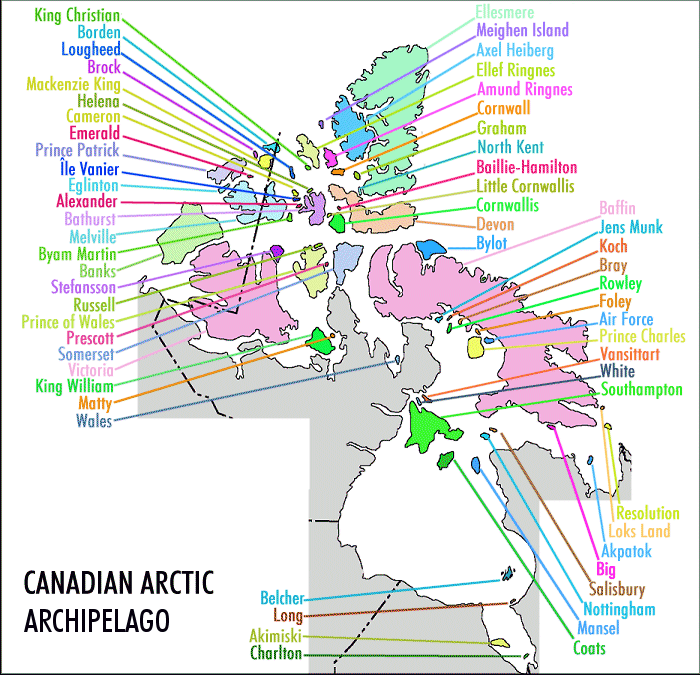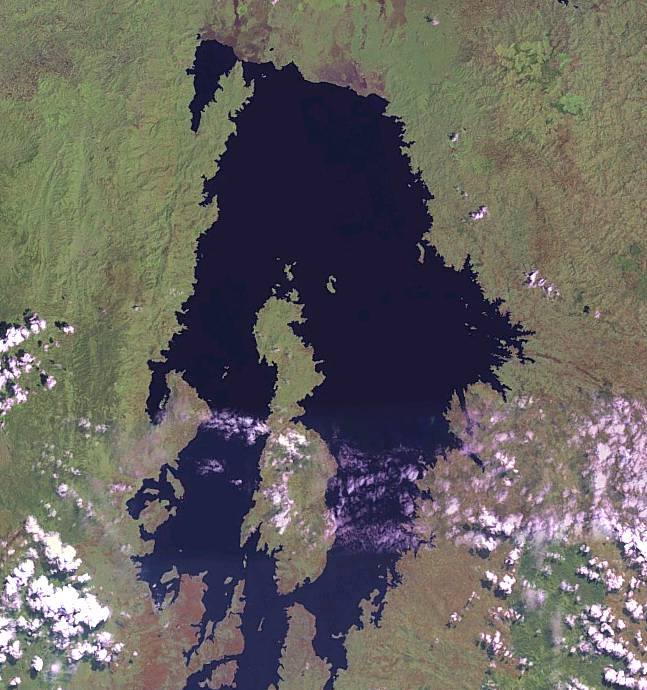|
Fleming Island (Saskatchewan)
Fleming Island is a small island in the south-western part of Cree Lake in the Canadian province of Saskatchewan. It was named after Kenneth Gordon Fleming as part of the GeoMemorial Commemorative Naming Program that honours soldiers who died in service of Canada. He was killed in action during World War II World War II or the Second World War (1 September 1939 – 2 September 1945) was a World war, global conflict between two coalitions: the Allies of World War II, Allies and the Axis powers. World War II by country, Nearly all of the wo ... on 8 August 1944. In 2008, Titan Uranium conducted exploration drilling on the island looking for uranium, building on earlier exploration activities conducted by other mining companies on the island. See also * List of islands of Saskatchewan * Recursive islands and lakes References Uninhabited islands of Saskatchewan Lake islands of Saskatchewan {{Saskatchewan-island-stub ... [...More Info...] [...Related Items...] OR: [Wikipedia] [Google] [Baidu] |
Cree Lake
Cree Lake is a large glacial lake in the Canadian province of Saskatchewan. The lake is the fourth largest in the province and is located west of Reindeer Lake and south of Lake Athabasca in the Mackenzie River drainage basin. Cree Lake is the remnant of a large proglacial lake that flowed south into the Churchill River during the last ice age. Cree Lake has no highway access. Floatplanes are the means used to access the lodges and amenities on the lake. Description Cree Lake is in the Canadian Shield in Saskatchewan's Northern Administration District. Covering an area of , it is Saskatchewan's fourth largest lake. It spans a length of , a width of , and has a depth of about . The lake has many islands and a jagged shoreline that measures about long. Several rivers feed the lake with the larger ones being Brustad River, Karras River, and Routledge River. Cree River, the lake's outflow, flows out at the northern end and heads north into Black Lake, which is connected ... [...More Info...] [...Related Items...] OR: [Wikipedia] [Google] [Baidu] |
Canada
Canada is a country in North America. Its Provinces and territories of Canada, ten provinces and three territories extend from the Atlantic Ocean to the Pacific Ocean and northward into the Arctic Ocean, making it the world's List of countries and dependencies by area, second-largest country by total area, with the List of countries by length of coastline, world's longest coastline. Its Canada–United States border, border with the United States is the world's longest international land border. The country is characterized by a wide range of both Temperature in Canada, meteorologic and Geography of Canada, geological regions. With Population of Canada, a population of over 41million people, it has widely varying population densities, with the majority residing in List of the largest population centres in Canada, urban areas and large areas of the country being sparsely populated. Canada's capital is Ottawa and List of census metropolitan areas and agglomerations in Canada, ... [...More Info...] [...Related Items...] OR: [Wikipedia] [Google] [Baidu] |
Provinces And Territories Of Canada
Canada has ten provinces and three territories that are sub-national administrative divisions under the jurisdiction of the Constitution of Canada, Canadian Constitution. In the 1867 Canadian Confederation, three provinces of British North America—New Brunswick, Nova Scotia, and the Province of Canada (which upon Confederation was divided into Ontario and Quebec)—united to form a federation, becoming a fully Independence, independent country over the next century. Over its history, Canada's international borders have changed several times as it has added territories and provinces, making it the List of countries and dependencies by area, world's second-largest country by area. The major difference between a Canadian province and a territory is that provinces receive their power and authority from the ''Constitution Act, 1867'' (formerly called the ''British North America Acts, British North America Act, 1867''), whereas territories are federal territories whose governments a ... [...More Info...] [...Related Items...] OR: [Wikipedia] [Google] [Baidu] |
Saskatchewan
Saskatchewan is a Provinces and territories of Canada, province in Western Canada. It is bordered on the west by Alberta, on the north by the Northwest Territories, on the east by Manitoba, to the northeast by Nunavut, and to the south by the United States (Montana and North Dakota). Saskatchewan and neighbouring Alberta are the only landlocked provinces of Canada. In 2025, Saskatchewan's population was estimated at 1,250,909. Nearly 10% of Saskatchewan's total area of is fresh water, mostly rivers, reservoirs, and List of lakes in Saskatchewan, lakes. Residents live primarily in the southern prairie half of the province, while the northern half is mostly forested and sparsely populated. Roughly half live in the province's largest city, Saskatoon, or the provincial capital, Regina, Saskatchewan, Regina. Other notable cities include Prince Albert, Saskatchewan, Prince Albert, Moose Jaw, Yorkton, Swift Current, North Battleford, Estevan, Weyburn, Melfort, Saskatchewan, Melfort, ... [...More Info...] [...Related Items...] OR: [Wikipedia] [Google] [Baidu] |
List Of Rural Municipalities In Saskatchewan
A Rural municipality (Canada), rural municipality (RM) is a type of incorporated municipality in the Provinces and territories of Canada, Canadian province of Saskatchewan. A rural municipality is created by the Minister of Municipal Relations by ministerial order via section 49 of ''The Municipalities Act''. Saskatchewan has 296 rural municipalities, which are located in the central and southern portions of the province. They had a cumulative population of and an average population of in the 2016 Canadian Census, 2016 Census of Population. Saskatchewan's largest and smallest rural municipalities are the Rural Municipality of Corman Park No. 344, RM of Corman Park No. 344 and the Rural Municipality of Glen McPherson No. 46, RM of Glen McPherson No. 46 with populations of 8,568 and 72 respectively. The northern half of the province does not lie within any rural municipality, but is rather administered by the provincial government through the Northern Saskatchewan Adm ... [...More Info...] [...Related Items...] OR: [Wikipedia] [Google] [Baidu] |
Northern Saskatchewan Administration District
The Northern Saskatchewan Administration District (NSAD) is the unincorporated area of Northern Saskatchewan, Canada. It encompasses approximately half of Saskatchewan's land mass. Despite its extent, the majority of Saskatchewanians live in the southern half of the province, while the majority of northern Saskatchewanians live in incorporated municipalities outside the NSAD's jurisdiction. The area is co-extensive with Division No. 18, Saskatchewan, one of Statistics Canada, Statistics Canada's Census divisions of Canada, census divisions in the province for its 2016 Canadian census, 2016 census. The census division is the largest in the province terms of area at , representing 46 per cent of the province's entire area of . The most populous communities in the census division are La Ronge and La Loche with populations of 2,743 and 2,611 respectively. The 2016 Canadian census, 2016 census also refers to the Unorganized Division No. 18, which counted only 1,115 residents, which ... [...More Info...] [...Related Items...] OR: [Wikipedia] [Google] [Baidu] |
World War II
World War II or the Second World War (1 September 1939 – 2 September 1945) was a World war, global conflict between two coalitions: the Allies of World War II, Allies and the Axis powers. World War II by country, Nearly all of the world's countries participated, with many nations mobilising all resources in pursuit of total war. Tanks in World War II, Tanks and Air warfare of World War II, aircraft played major roles, enabling the strategic bombing of cities and delivery of the Atomic bombings of Hiroshima and Nagasaki, first and only nuclear weapons ever used in war. World War II is the List of wars by death toll, deadliest conflict in history, causing World War II casualties, the death of 70 to 85 million people, more than half of whom were civilians. Millions died in genocides, including the Holocaust, and by massacres, starvation, and disease. After the Allied victory, Allied-occupied Germany, Germany, Allied-occupied Austria, Austria, Occupation of Japan, Japan, a ... [...More Info...] [...Related Items...] OR: [Wikipedia] [Google] [Baidu] |
List Of Islands Of Saskatchewan
This is an incomplete list of islands of Canada. Arctic islands Islands and island groups in the Arctic Archipelago include (all islands in Nunavut unless noted): Queen Elizabeth Islands The Queen Elizabeth Islands consist of: * Adams Island *Alexander Island *Baillie-Hamilton Island * Borden Island * Brock Island * Buckingham Island * Byam Martin Island * Cameron Island *Coburg Island * Cornwall Island *Devon Island * Eglinton Island *Ellesmere Island * Emerald Isle * Graham Island * Griffith Island * Helena Island *Hoved Island *Île Vanier *King Christian Island *Little Cornwallis Island *Lougheed Island *Mackenzie King Island *Massey Island *Meighen Island *North Kent Island * Pioneer Island *Prince Patrick Island * Stor Island *2,092 other minor islands including Hans Island (with Denmark) (), a small uninhabited barren knoll off Ellesmere Island, measuring Sverdrup Islands The Sverdrup Islands, an archipelago of the northern Queen Elizabeth Islands, include: *Amund Rin ... [...More Info...] [...Related Items...] OR: [Wikipedia] [Google] [Baidu] |
Recursive Islands And Lakes
A recursive island or lake, also known as a nested island or lake, is an island or a lake that lies within a lake or an island. For the purposes of defining recursion, small continental land masses such as Madagascar and New Zealand count as islands, while large continental land masses such as Australia do not. Islands found within lakes in these countries are often recursive islands because the lake itself is located on an island. Recursive islands Islands in lakes Islands in lakes on islands There are nearly 1,000 islands in lakes on islands in Finland alone. Islands in lakes on islands in lakes Islands in lakes on islands in lakes on islands Islands in lakes on islands in lakes on islands in lakes Recursive lakes Lakes on islands Lakes on islands in lakes Lakes on islands in lakes on islands Lakes on islands in lakes on islands in lakes See also * List of endorheic basins * Volcanic crater lake * List of islands by area * Lis ... [...More Info...] [...Related Items...] OR: [Wikipedia] [Google] [Baidu] |
Uninhabited Islands Of Saskatchewan
The list of uninhabited regions includes a number of places around the globe. The list changes year over year as human beings migrate into formerly uninhabited regions, or migrate out of formerly inhabited regions. Definitions The exact definition of what makes a place "uninhabited" is not simple. Nomadic hunter-gather and pastoral societies live in extremely low population densities and range across large territories where they camp, rather than staying in any one place year-round. During the height of settler colonialism many European governments declared huge areas of the New World and Australia to be ''Terra nullius'' (land belonging to no one), but this was done to create a legal pretext to annex them to European empires; these lands were not, and are not uninhabited. While some communities are still nomadic, there are many remote and isolated communities in the less populated parts of the world that are separated from each other by hundreds or thousands kilometres ... [...More Info...] [...Related Items...] OR: [Wikipedia] [Google] [Baidu] |




